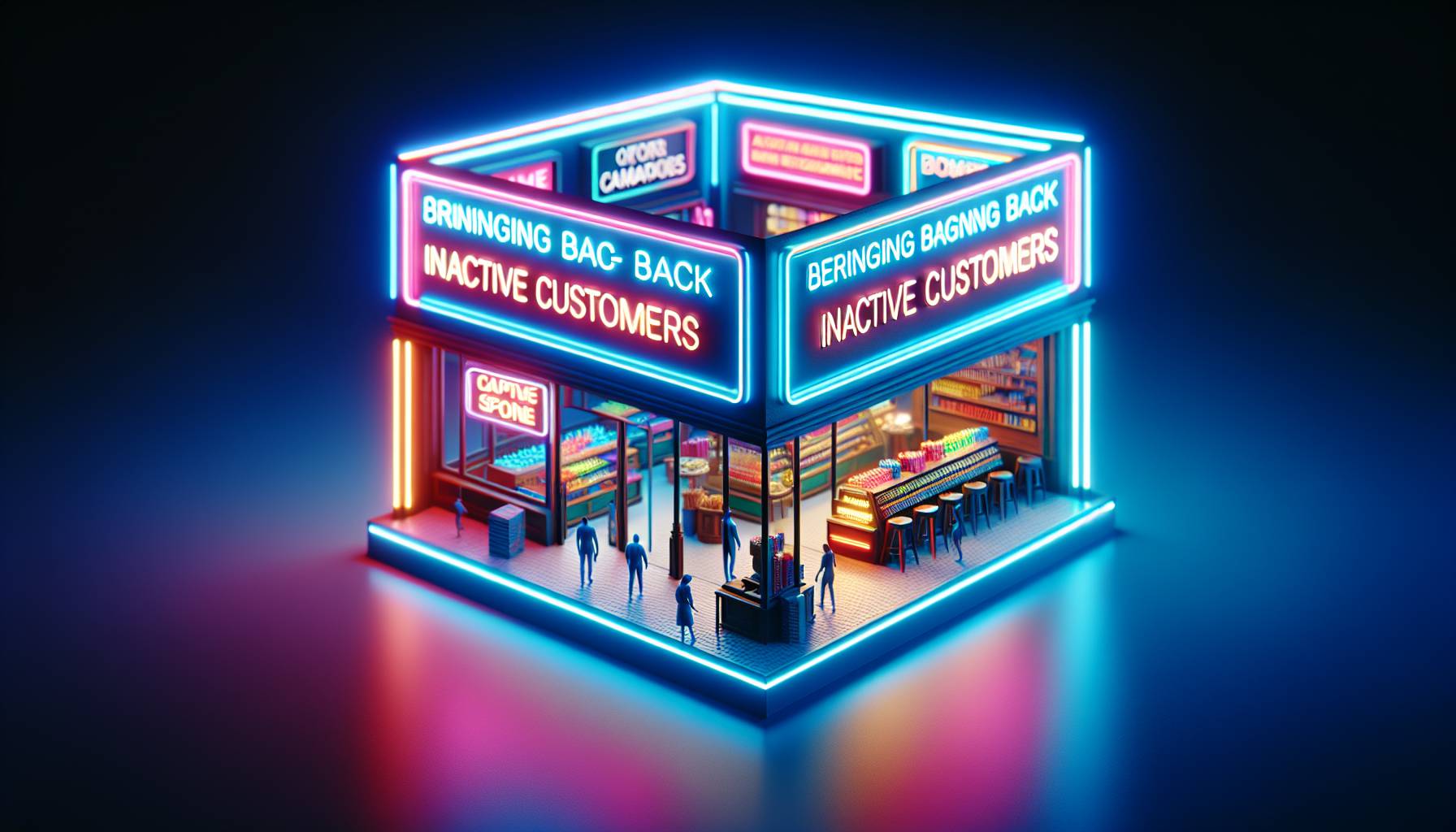Understanding Automated Marketing Campaigns

Most people seem to think that automated marketing campaigns are fairly set-and-forget. The fantasy that robots are managing your marketing while you sleep is occasionally a good one. But in reality, good automated campaigns are hard work.
They need regular monitoring, modifying and updating. The way I see it, automated marketing is a powerful tool when used correctly because it has the potential to offer highly targeted and effective communication with your audience but only if you stay engaged with it’s strategies and content. More or less.
No one wants to be the sender of ‘cringe’ campaigns. Automation without strategy is a wasted opportunity. Letting the robots run amok with your email lists is not going to help you in the long run. If you don’t have a clear vision for who your customer is and what message they need at each stage of their journey, you aren’t going to see results no matter how many times you set up the campaign.
It can get overwhelming -especially as technology advances- but if you stick to keeping it as human as possible, automation can transform your marketing efforts. More or less. If you’re feeling lost in the sea of features and possibilities, strip it back to just a few simple journeys that resonate with your business objectives and then add on from there if required.
Key Benefits of Automation in Marketing

A lot of people assume that marketing automation is just another impersonal tool that lets businesses mindlessly bombard customers with the same old messages. Or they get spooked by the tech side of things, convinced it’ll turn their business into some cold, digital factory. The way I see it, it’s an easy mistake to make, given how much jargon is out there - but in practice, effective marketing automation can be less about soulless spam and more about creating communication that's sort of meaningful and engaging. And yes, I know that sounds a little counterintuitive - how can automating something make it more personal.
When set up thoughtfully (with actual human thinking behind the rules), automated campaigns can respond to real-time triggers and send tailored messages to specific segments. Sort of like when you walk into your regular café and they ask if you want your usual. A platform can use data collected from previous purchases or responses to deliver emails, texts or even recommendations at times where customers are most likely to care - without constant manual effort. But automation isn’t just about message personalisation or saving time.
There are benefits that aren’t immediately obvious until you’ve seen it in action. For example, using automation to nurture leads can sort of avoid losing track of potential conversions. You might have people coming in at different points - some ready to buy, others researching options - and setting up workflows makes sure each type gets the right kind of attention without someone having to comb through records every day. Sort of.
Plus, measuring results becomes more realistic because you have all the data on who received what and when. Admittedly, there is quite a bit a bit of a learning curve - I had my fair share of frustration with terms like ‘drip sequences’, ‘workflows’, ‘conditional filters’ when starting out. But once you climb over that hump, the relief is potentially palpable; especially for teams with limited capacity. Automation covers the basics so you can spend more energy on refining creative strategy or experimenting with new ideas.
No faffing about transferring names from forms onto spreadsheets or setting endless reminders to hit send on Tuesday morning - which, I think most would agree, has its perks.
Campaign 1: Welcome Series for New Subscribers

Let’s be honest. Most people equate the whole Welcome Series with a “Hi there, thank you for signing up” type of email. Maybe they’d throw in a discount for good measure - and then they’ll leave it at that.
More or less. The reality is that this first interaction with your subscribers is one of the most important ways to build trust and showcase your brand’s personality. If done well, you can generally begin forging a long-lasting relationship with your customers and encourage conversions. A welcome email series often comprises 3-5 emails sent over 2 weeks or so.
It gives new subscribers their first taste of what your brand has to offer - in addition to nurturing leads, introducing your brand story, building relationships, and encouraging engagement. While the first email is great for expressing gratitude and extending a warm welcome, all subsequent ones can be tailored towards sharing content about products or services that are relevant to their purchase history or interests (if you have those details on hand). Or if you want to take it up a notch - by sending more personalised recommendations based on their unique preferences.
For this automated campaign to work, all you need is an email platform that will let you schedule them ahead of time. This includes being able to specify when each message should be delivered relative to the subscriber's initial registration date (for example: 1 day after signing up). What also helps is investing in segmentation strategies before triggering these flows so only those who meet certain criteria will receive them (such as location).
It does get quite challenging though - especially when trying out something new because it means trusting algorithms over manual tasks. But there's nothing like seeing results fast because now everyone knows how much easier things become once everything goes smoothly without having spent hours crafting different types of messages every single time someone joins our list.
Campaign 2: Abandoned Cart Recovery

Everyone’s obsessed with the win-back story - cart recovery emails that swoop in and save the day, transforming almost-sales into loyal customers. Retailers love them. Agencies sing their praises.
The numbers look great at first glance, too. But I think people miss something rather important about what works and what doesn’t - namely, the fact that a lot of people abandon carts without even planning to buy anything. Cart recovery campaigns are like those movie sequels that never quite manage to live up to the original.
They’re rarely ever bad, but they seldom get any attention. There’s a fair bit of complexity here that deserves more thought, even if it can occasionally be a little inconvenient to admit. The messaging needs to be persuasive but not pushy, warm but not familiar, and present a compelling offer without getting on anyone’s nerves.
But this is where it gets interesting - if you can get the tone just right, there’s a real chance you’ll convert those cart abandoners into your best customers. It’s a fine line to walk though - you need a bit of cheek and charm to get them back into your world. That’s why I always recommend having some fun with the messaging here. It’s not unlike running into someone you’ve been on a few dates with and both of you feeling like maybe this could be something more if only you were honest about what went wrong last time.
If there’s an item in the cart, let them know you noticed but also offer them something that makes sense for where they are in their buyer journey. It also seems like a fairly good idea to ask them what went wrong - why did they abandon their cart. Sometimes it’s shipping, sometimes it’s commitment issues.
Whatever it is, acknowledging it out loud shows your customer that you’re willing to take responsibility if there was something you could have done better and lets you own your wins if there wasn’t.
Campaign 3: Re-Engagement for Inactive Customers

Here’s the thing I think people get wrong about re-engagement. Most treat it as a numbers game, not a conversation. The classic approach is to blast the entire lapsed list with “We miss you.
” emails, or worse, offer heavy discounts to everyone who so much as hesitated at checkout two months ago. It feels like begging when it should feel like catching up with a friend you haven’t seen in ages. When I look at the re-engagement campaigns that work, they’re more nuanced - and far more honest.
And yes, I know it’s easier said than done when it comes to segmenting which ‘inactive’ customers are worth rekindling a relationship with and which have moved on forever. But, nothing is worse than shouting into an empty room or reminding someone of a bad date they’d rather forget. Sort of. That’s why segmenting your win-back effort by customer value is essential; if someone spent hundreds last year but hasn’t purchased for a while, they deserve something special to come back.
For those who bought once because of an impulsive discount. Maybe they don’t need that ‘personal’ note about how important their business is. It can get tricky because sometimes you genuinely don’t know why someone stopped buying from you - whether they fell out of love with the brand, had a negative experience or simply outgrew your offering.
That’s where being upfront in your messaging goes a long way - a simple note asking if you did something wrong often works wonders over endless discounts or loyalty points. I also find that asking for feedback helps establish the fact that you do care about their opinions and their business – all while telling them about your new collection or product line designed specifically for people like them. It sort of tells them you have moved on too and have been busy making something worthwhile for them to come back to.
Campaign 4: Seasonal Promotions and Offers

Seasonal offers are always exciting, at least for the consumer. But what a lot of businesses miss about this is that it's also a time when everybody else is running promotions. And more often than not, you're competing with businesses offering discounts through digital marketing, so your campaign needs to be watertight and have the creative edge to really make the difference. I like thinking of these campaigns as an opportunity to show brand personality and take people by surprise.
This could be through a visual reimagining for the season or something witty and personal. For instance, H&M has made personalising their communication an art form and the reason their campaign automation works so well is because their subject lines stand out so much. What I've learnt over the years is that there are two parts to think about with seasonal campaigns - one, a solid long-term plan for when you're going to send out these emails and then, a spur of the moment campaign that stands out completely.
The way I see it, the timing of these is important because you're playing on anticipation and giving people breathing room before the next promotion so they don't get overwhelmed or even worse, irritated. And there's definitely a tricky balance here that can rarely take some time to find. Sometimes it works beautifully and sometimes it flops - it's that little bit of uncertainty that makes it even more fun. But if you have solid foundational data on what your subscribers like engaging with best, then you've already done half of the work right there.
And in all this, if there's anything you need to stay away from, it's bad copywriting because nothing says someone is trying too hard like weak lines that are just exaggerating offers without any real focus on your brand.

